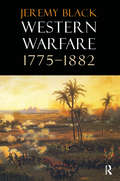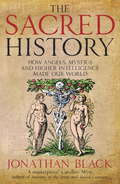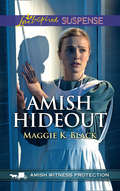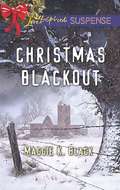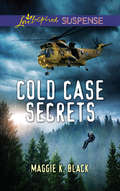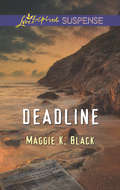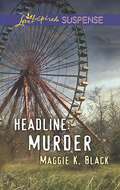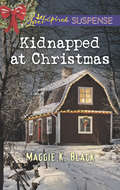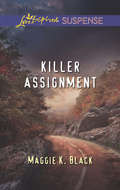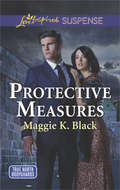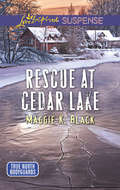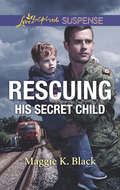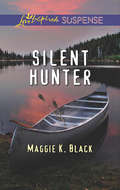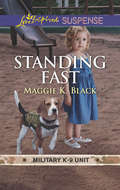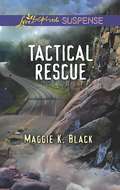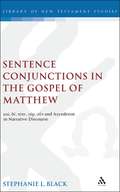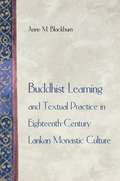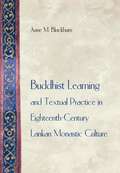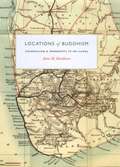- Table View
- List View
Western Warfare, 1775-1882
by Jeremy BlackThis is a wide-ranging and comprehensive survey of warfare from the outbreak of the American War of Independence to the British conquest of Egypt. Drawing on both primary and secondary sources this book offers an unrivalled account of civil and international conflicts involving Western powers, integrating both naval and land warfare. This book covers military capability as well as conflict, social and political contexts as well as weaponry, tactics and strategy. As well as examining such major conflicts as the Napoleonic Wars, the Crimean War, the American Civil War and the Wars of German Unification, this book redresses the imbalance of previous treatments by examining other important conflicts, for example, those in Latin America, as well as insurgency and counter-insurgency in Europe. This book's global perspective provides for a more reliable assessment of what constitutes military capability. In so doing, the author challenges the technological determinism and linear conceptions of developments in military science that continue to characterise much of military history. Instead the author reveals a much more complex dynamic, indeed going so far as to question the idea of 'modernity' itself. Bold in scope, and cutting-edge in its interpretations, this book offers much for the student, general reader and professional historian alike.
The Sacred History: How Angels, Mystics and Higher Intelligence Made Our World
by Jonathan BlackFrom the bestselling author of The Secret History of the World, an exploration of the mystical forces that shape and protect usThe Sacred History is an account of the workings of the supernatural in history. It tells the epic story of angels, from Creation, to Evolution through to the operations of the supernatural in the modern world. This tale of how people and peoples have been helped by angels and other angelic beings is woven into a spellbinding narrative that brings together Krishna, Moses, Buddha, Elijah, Mary and Jesus, Mohammed, Joan of Arc, the angels who helped Hungarian Jews persecuted by the Nazis, and stories from African, Native American and Celtic traditions. Told from the spiritual point of view, The Sacred History relates every betrayal, every change of heart, every twist and turn, everything that looks like a coincidence, every portent, every clue, every defeat, every rescue moments before the prison door clangs shut. This is the angelic version of events.
Amish Hideout: Amish Hideout Wilderness Secrets Explosive Reunion (Amish Witness Protection #1)
by Maggie K. BlackShe must survive to testify…
Christmas Blackout: Protecting Virginia Guarding Abigail High-caliber Holiday Christmas Blackout (Mills And Boon Love Inspired Suspense Ser.)
by Maggie K. BlackNO WAY OUT
Christmas Witness Protection (Protected Identities #1)
by Maggie K. BlackA witness targeted…and on the runThe first Protected Identities novel
Cold Case Secrets (True North Heroes #4)
by Maggie K. BlackThe Canadian wilderness can be deadlyA gripping True North Heroes romance
Deadline: A Trace Of Memory Deadline No Safe Haven (Mills And Boon Love Inspired Suspense Ser.)
by Maggie K. BlackTHE PERFECT CRIME
Headline: Joint Investigation High-risk Homecoming Headline: Murder (Mills And Boon Love Inspired Suspense Ser.)
by Maggie K. BlackWITNESS TO MURDER
Kidnapped At Christmas: Identity Unknown Lakeside Peril Kidnapped At Christmas (Mills And Boon Love Inspired Suspense Ser.)
by Maggie K. BlackHER HOLIDAY BODYGUARD
Killer Assignment (Mills And Boon Love Inspired Suspense Ser.)
by Maggie K. BlackJournalist Katie Todd wanted her name as a byline on the front page, not in the obituaries. When an assignment goes very wrong, she finds herself pursued by ruthless kidnappers.
The Littlest Target: Guarding The Babies The Littlest Target Fugitive Spy (True North Heroes #2)
by Maggie K. BlackNanny and baby on the run A taut thriller in the True North Heroes series
Protective Measures: True North Bodyguards (True North Bodyguards #3)
by Maggie K. BlackUNDERCOVER BODYGUARD
Rescue At Cedar Lake: Shadow Of Suspicion Rescue At Cedar Lake Presumed Dead (True North Bodyguards #2)
by Maggie K. BlackSNOWBOUND WITH A KILLER Called in to work with a patient, therapist Theresa Vaughan didn't anticipate being held hostage by a killer in a snowbound lake cottage…or rescued by her former fiancé.
Rescuing His Secret Child: Rescuing His Secret Child Lethal Ransom Reunion On The Run (Lone Star Justice #6)
by Maggie K. BlackA train heist unearths family secrets
Silent Hunter: To Save Her Child Taken Silent Hunter (Mills And Boon Love Inspired Suspense Ser.)
by Maggie K. BlackEdge of Survival
Standing Fast: Standing Fast Cowboy Bodyguard Standoff At Midnight Mountain (Military K-9 Unit #4)
by Maggie K. BlackFramed! A Military K-9 Unit Story
Tactical Rescue: Truth And Consequences Seaside Secrets Tactical Rescue (Rookie K-9 Unit Ser.)
by Maggie K. BlackREUNITED BY DANGER Zack Keats broke Rebecca Miles’ heart when they were teens, but now he’s her only hope to stay alive. Trapped in the Canadian wilderness, Rebecca is a target from all angles: a dangerous gang, her treasonous stepbrother and the government who thinks she’s also a traitor.
Sentence Conjunctions in the Gospel of Matthew: kai, de, tote, gar, oun and Asyndeton in Narrative Discourse (The Library of New Testament Studies #216)
by Stephanie BlackAn application of current linguistic research on discourse markers to sentence conjunctions in Matthew's Gospel. This treatment combines linguistic insights with a detailed examination of Matthew's use of kai, de and similar conjunctions in narrative passages, culminating in a verse by verse commentary on the structure of Matthew's ;miracle chapters', Matthew 8-9. Black breaks new ground in linguistic theory by modelling the interplay between features such as sentence conjunction, word order, and verb tense in the portrayal of continuity and discontinuity in Greek narrative. A volume of interest to New Testament scholars, classicists, discourse analysts and linguists alike.
Buddhist Learning and Textual Practice in Eighteenth-Century Lankan Monastic Culture (Buddhisms: A Princeton University Press Series #12)
by Anne M. BlackburnAnne Blackburn explores the emergence of a predominant Buddhist monastic culture in eighteenth-century Sri Lanka, while asking larger questions about the place of monasticism and education in the creation of religious and national traditions. Her historical analysis of the Siyam Nikaya, a monastic order responsible for innovations in Buddhist learning, challenges the conventional view that a stable and monolithic Buddhism existed in South and Southeast Asia prior to the advent of British colonialism in the nineteenth century. The rise of the Siyam Nikaya and the social reorganization that accompanied it offer important evidence of dynamic local traditions. Blackburn supports this view with fresh readings of Buddhist texts and their links to social life beyond the monastery. Comparing eighteenth-century Sri Lankan Buddhist monastic education to medieval Christian and other contexts, the author examines such issues as bilingual commentarial practice, the relationship between clerical and "popular" religious cultures, the place of preaching in the constitution of "textual communities," and the importance of public displays of learning to social prestige. Blackburn draws upon indigenous historical narratives, which she reads as rhetorical texts important to monastic politics and to the naturalization of particular attitudes toward kingship and monasticism. Moreover, she questions both conventional views on "traditional" Theravadin Buddhism and the "Buddhist modernism" / "Protestant Buddhism" said to characterize nineteenth-century Sri Lanka. This book provides not only a pioneering critique of post-Orientalist scholarship on South Asia, but also a resolution to the historiographic impasse created by post-Orientalist readings of South Asian history.
Buddhist Learning and Textual Practice in Eighteenth-Century Lankan Monastic Culture (PDF)
by Anne M. BlackburnAnne Blackburn explores the emergence of a predominant Buddhist monastic culture in eighteenth-century Sri Lanka, while asking larger questions about the place of monasticism and education in the creation of religious and national traditions. Her historical analysis of the Siyam Nikaya, a monastic order responsible for innovations in Buddhist learning, challenges the conventional view that a stable and monolithic Buddhism existed in South and Southeast Asia prior to the advent of British colonialism in the nineteenth century. The rise of the Siyam Nikaya and the social reorganization that accompanied it offer important evidence of dynamic local traditions. Blackburn supports this view with fresh readings of Buddhist texts and their links to social life beyond the monastery. Comparing eighteenth-century Sri Lankan Buddhist monastic education to medieval Christian and other contexts, the author examines such issues as bilingual commentarial practice, the relationship between clerical and "popular" religious cultures, the place of preaching in the constitution of "textual communities," and the importance of public displays of learning to social prestige. Blackburn draws upon indigenous historical narratives, which she reads as rhetorical texts important to monastic politics and to the naturalization of particular attitudes toward kingship and monasticism. Moreover, she questions both conventional views on "traditional" Theravadin Buddhism and the "Buddhist modernism" / "Protestant Buddhism" said to characterize nineteenth-century Sri Lanka. This book provides not only a pioneering critique of post-Orientalist scholarship on South Asia, but also a resolution to the historiographic impasse created by post-Orientalist readings of South Asian history.
Locations of Buddhism: Colonialism and Modernity in Sri Lanka (Buddhism and Modernity)
by Anne M. BlackburnModernizing and colonizing forces brought nineteenth-century Sri Lankan Buddhists both challenges and opportunities. How did Buddhists deal with social and economic change; new forms of political, religious, and educational discourse; and Christianity? And how did Sri Lankan Buddhists, collaborating with other Asian Buddhists, respond to colonial rule? To answer these questions, Anne M. Blackburn focuses on the life of leading monk and educator Hikkaduve Sumangala (1827–1911) to examine more broadly Buddhist life under foreign rule. In Locations of Buddhism, Blackburn reveals that during Sri Lanka’s crucial decades of deepening colonial control and modernization, there was a surprising stability in the central religious activities of Hikkaduve and the Buddhists among whom he worked. At the same time, they developed new institutions and forms of association, drawing on pre-colonial intellectual heritage as well as colonial-period technologies and discourse. Advocating a new way of studying the impact of colonialism on colonized societies, Blackburn is particularly attuned here to human experience, paying attention to the habits of thought and modes of affiliation that characterized individuals and smaller scale groups. Locations of Buddhism is a wholly original contribution to the study of Sri Lanka and the history of Buddhism more generally.
Locations of Buddhism: Colonialism and Modernity in Sri Lanka (Buddhism and Modernity)
by Anne M. BlackburnModernizing and colonizing forces brought nineteenth-century Sri Lankan Buddhists both challenges and opportunities. How did Buddhists deal with social and economic change; new forms of political, religious, and educational discourse; and Christianity? And how did Sri Lankan Buddhists, collaborating with other Asian Buddhists, respond to colonial rule? To answer these questions, Anne M. Blackburn focuses on the life of leading monk and educator Hikkaduve Sumangala (1827–1911) to examine more broadly Buddhist life under foreign rule. In Locations of Buddhism, Blackburn reveals that during Sri Lanka’s crucial decades of deepening colonial control and modernization, there was a surprising stability in the central religious activities of Hikkaduve and the Buddhists among whom he worked. At the same time, they developed new institutions and forms of association, drawing on pre-colonial intellectual heritage as well as colonial-period technologies and discourse. Advocating a new way of studying the impact of colonialism on colonized societies, Blackburn is particularly attuned here to human experience, paying attention to the habits of thought and modes of affiliation that characterized individuals and smaller scale groups. Locations of Buddhism is a wholly original contribution to the study of Sri Lanka and the history of Buddhism more generally.
Locations of Buddhism: Colonialism and Modernity in Sri Lanka (Buddhism and Modernity)
by Anne M. BlackburnModernizing and colonizing forces brought nineteenth-century Sri Lankan Buddhists both challenges and opportunities. How did Buddhists deal with social and economic change; new forms of political, religious, and educational discourse; and Christianity? And how did Sri Lankan Buddhists, collaborating with other Asian Buddhists, respond to colonial rule? To answer these questions, Anne M. Blackburn focuses on the life of leading monk and educator Hikkaduve Sumangala (1827–1911) to examine more broadly Buddhist life under foreign rule. In Locations of Buddhism, Blackburn reveals that during Sri Lanka’s crucial decades of deepening colonial control and modernization, there was a surprising stability in the central religious activities of Hikkaduve and the Buddhists among whom he worked. At the same time, they developed new institutions and forms of association, drawing on pre-colonial intellectual heritage as well as colonial-period technologies and discourse. Advocating a new way of studying the impact of colonialism on colonized societies, Blackburn is particularly attuned here to human experience, paying attention to the habits of thought and modes of affiliation that characterized individuals and smaller scale groups. Locations of Buddhism is a wholly original contribution to the study of Sri Lanka and the history of Buddhism more generally.
Locations of Buddhism: Colonialism and Modernity in Sri Lanka (Buddhism and Modernity)
by Anne M. BlackburnModernizing and colonizing forces brought nineteenth-century Sri Lankan Buddhists both challenges and opportunities. How did Buddhists deal with social and economic change; new forms of political, religious, and educational discourse; and Christianity? And how did Sri Lankan Buddhists, collaborating with other Asian Buddhists, respond to colonial rule? To answer these questions, Anne M. Blackburn focuses on the life of leading monk and educator Hikkaduve Sumangala (1827–1911) to examine more broadly Buddhist life under foreign rule. In Locations of Buddhism, Blackburn reveals that during Sri Lanka’s crucial decades of deepening colonial control and modernization, there was a surprising stability in the central religious activities of Hikkaduve and the Buddhists among whom he worked. At the same time, they developed new institutions and forms of association, drawing on pre-colonial intellectual heritage as well as colonial-period technologies and discourse. Advocating a new way of studying the impact of colonialism on colonized societies, Blackburn is particularly attuned here to human experience, paying attention to the habits of thought and modes of affiliation that characterized individuals and smaller scale groups. Locations of Buddhism is a wholly original contribution to the study of Sri Lanka and the history of Buddhism more generally.
